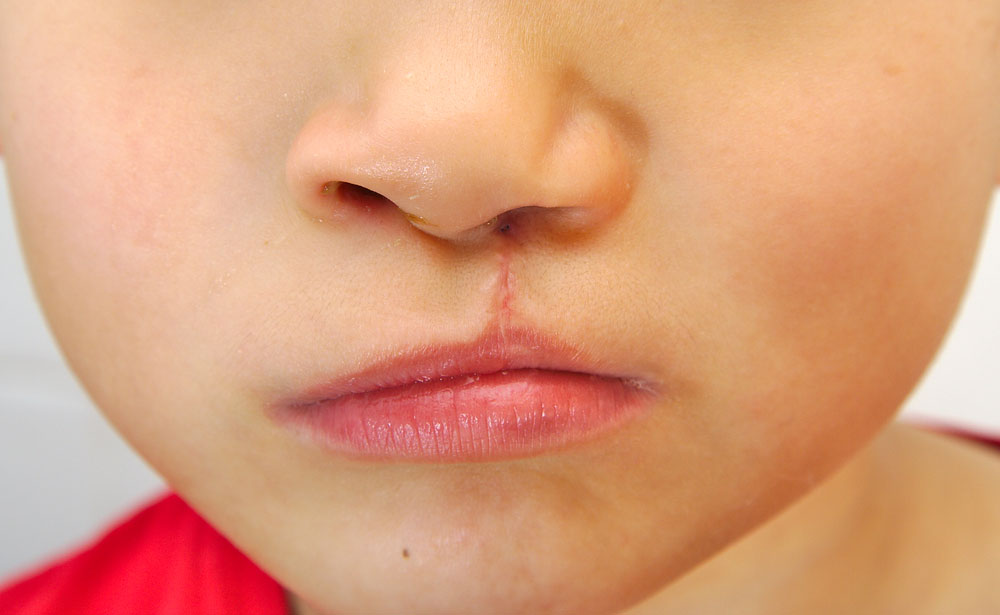Cleft lip (CL), with or without cleft palate (CLP) or just cleft palate (CP) is a congenital abnormality in the facial area that is often encountered and occurs in facial growth since the embryo. Patients with cleft lip disorders will have various problems related to aesthetics, nutrition, speech and psychosocial functions.
Determination for the optimal surgery time for cleft lip and / or palate surgery can vary depending on the decision made by the surgical team, the risk of anesthesia, comorbid congenital anomalies and the psychological influence of the patient’s family. The rule of ten is used as a reference to determine which patients are fit for surgery, especially for cleft lip patients. The rule of ten include parameters at 10 such as the weight limit value of 10 lbs, hemoglobin 10 g / dL and white blood cell count <10,000 mm 3 and the optimal time for surgery, over ten weeks old.
Optimal conditions cannot always be obtained in all patients, patients with malnutrition conditions, and also low birth weight will result in patients who do not meet the criteria of the rule of ten which is established as preoperative standards. However, not all cases can be treated equally, for example in preparation for surgery if two of the three rules of ten criteria are met the patient can be considered for cleft lip correction surgery.
The purpose of this study was to determine whether patients with criteria that did not meet the Rule of Ten could be excluded for for labiaplasty preparation. This study used a retrospective descriptive method through data collection of surgical patients at the Network Hospital and at Universitas Airlangga Dental Hospital. The independent variable in this study uses the rules of ten criteria which is the value for determining the optimal timing for surgery weighing more than 10 lbs, hemoglobin greater than 10 g / dL, age over ten weeks. The dependent variable includes patients with cleft lip and palate, and cleft lip and palate surgery with the Millard Technique. The data had been collected were grouped based on inclusion and exclusion criteria. Data that met the inclusion requirements were then analyzed statistically to test validity and reliability, followed by qualitative analysis to prove the hypothesis.
Data collection on cleft lip and palate social service patients carried out by the Oral and Maxillofacial Surgery team from 2016 to 2018 reached 242 patients, with 23 canceled patients and 219 patients successfully operated on. The surgeries have been carried out at Oral and Maxillofacial Surgery Network Hospital, Universitas Airlangga (UNAIR), Universitas Airlangga Dental and Oral Hospital.
The results showed that during the 2016 to 2018 period, the distribution of medical treatments in cleft lip and palate patients was associated with the rule of and over ten, which was obtained 191 treatments (87.61%) of 218 cleft lip and palate surgeries according to the rule of and over 10. There were 27 treatments (12.38%) not following the rule of and over ten.
Author: Ganendra Anugraha, Andra Rizqiawan, Indra Mulyawan and Reza Al Fessi
Details of the research can be viewed on:
(The flexibility rule of ten on cleft lip and palate patients on rural area)





